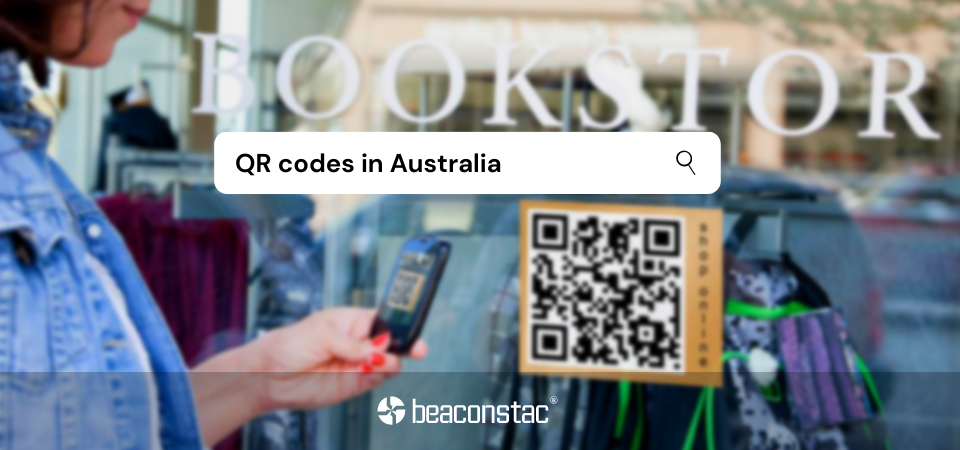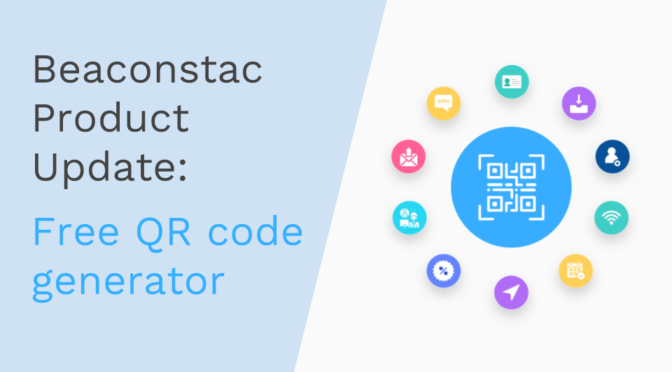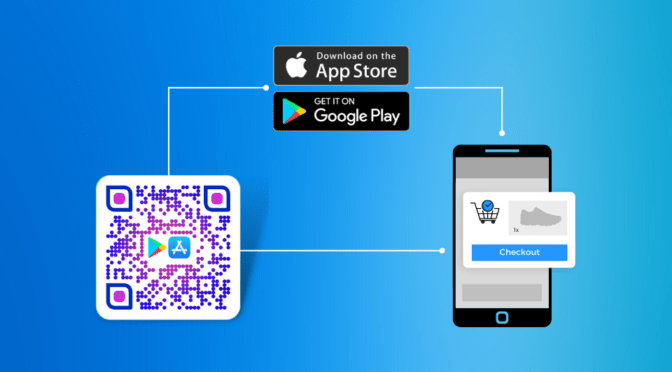In the space of a few months, QR Codes have gone from “just another fancy technology” to a dire necessity in Australia and worldwide.
Table of Contents
Rise of QR Codes in Australia | Use-cases | Future of QR Codes in Australia
The year 2020 was a gamechanger for QR Codes.
The COVID-19 pandemic stimulated a move to contact-free retail in all parts of the world. Driven by the need for a safe and accessible way to pave their way amidst the crisis, businesses, government establishments, and consumers embraced QR Codes.
QR Codes in Australia are now ubiquitous, almost second-nature to users, to enter restaurants, pubs, parks, and parking spaces for safe operations.
We also did a similar analysis of the usage of QR Codes in the US in case you want to give it a read.
What led to the rise of QR Codes in Australia?
According to a poll conducted by Econsultancy in 2012, about 62% of Australians didn’t know what QR Codes were or how to use them. Just over half the 18-34 age demographic could recognize QR Codes.
Fast forward to 2021, QR Codes are a renaissance technology tool that is being leveraged all across Australia in most industry verticals. Now, most Australians have either come across a QR Code or scanned one to enter an establishment in the country.
The term ‘QR Code’ was searched over 60,000 times in Australia in the last 12 months due to the technology’s surge, especially for contact tracing.

According to Google Trends, terms such as QR Code COVID, SA QR Code, COVID QR Code app, Service NSW, and more were the most searched queries in South Australia, Western Australia, New South Wales, and Tasmania.
Let’s find out the top 4 reasons that led to the rise of QR Codes in Australia.
QR Code usage in Australia: 4 significant use-cases
#1 COVIDSafe app for contact tracing to track infections

New South Wales, the ACT, South Australia, and Victoria have developed a government-based QR Code check-in system called COVIDSafe, to ensure safe and contactless transactions to limit the spread of the virus.
As the pandemic hit, although the proliferation of QR Codes in Australia was relatively swift, the option to enter cafes, parks, and establishments safely was still done manually.
As a result, by the end of November 2020, the Australian government made electronic check-ins via QR Codes mandatory. Effective contact tracing in Australia has had a reasonable success rate to date in curbing the spread of COVID-19 infections.
Inspired by Singapore’s check-in system, the COVIDSafe app has been made mandatory to use at the following venues –
- Hospitality
- Indoor physical recreation and community sport facilities
- Outdoor physical recreation and community sport facilities
- Weddings
- Restaurants
- Pubs and diners
- Real estate inspections and auctions
- Drive-in cinemas
- Amusement parks
- Nightclubs
For a detailed list, visit – https://www.coronavirus.vic.gov.au/about-victorian-government-qr-code-service.
Are QR Code check-in systems safe to use?
Amidst the mandatory usage of QR Code check-in systems at establishments, there is an immense discussion about the safety of QR codes and the data collected. Cybersecurity solutions for governments must be prioritized to prevent unauthorized access and misuse of citizen data during these operations.
The data collected by establishments and government agencies vary from region to region. Under the COVIDSafe industry plans, venues are not compelled to keep patrons’ information forever.
In New South Wales, the ACT, and South Australia, the user is expected to share their name, or a pseudonym, telephone number, and time of visit are required.
In Victoria, only the first name and a phone number, and time of visit must be recorded.
In Queensland, name, email address, and telephone must be recorded.
The length of time of the records varies from region to region. However, beyond the basic requirements, unless expressly prohibited by public health officers, the business can share marketing collates, newsletters, and offers to the user, given that they tick the checkbox.
The details of the user’s information are stored safely. Australian’s Information and Privacy Commissioner, Angelene Falk, stated that standard protection protocols are applied to privacy data.
“There are requirements to have in place reasonable steps to protect Australians’ personal information,” Ms. Falk said.
“We’ve been proactive with the industry in developing guidance.”
According to the SA government, the data will be stored centrally in a secured and encrypted database in the Department of Premier and Cabinet. Apart from paper backups, information will not be stored by individual businesses.
#2 Rise in QR Code payments for touch-free transactions

As the usage of digital wallets continues to thrive, the focus on QR Codes for payments is skyrocketing.
According to a recent study by Juniper Research, the total number of QR Code payment users globally will exceed 2.2 billion by 2025, equivalent to about 29% of all mobile phone users.
Because Australia has one of the highest global smartphone penetration levels, QR Code payments exponentially increased by astonishing numbers in the last 12 months.
The Deloitte Mobile Consumer Survey 2019 found that approximately 91% of Australians own a smartphone and a Roy Morgan report shows that about one in ten smartphone users (10.8%) use them for payments.
In the last 12 months, the shift to contactless QR payments have gained momentum –
Eftpos Australia launches national QR Code payment scheme

Eftpos, Australia’s national debit card scheme, announced a QR Code payment network rollout covering online, mobile, and high street transactions.
Eftpos aims to roll out the QR Code payments in trial by mid-year, with a national rollout completed in 2022.
Eftpos CEO Stephen Benton says the move corresponds with Australia’s colossal QR Code penetration via regular COVID-19 check-ins.
“The QR code payments network will enable local home-grown innovation by connecting numerous APIs, consumer digital wallets, and supporting technologies on top of the existing Eftpos network rails, providing choice and potential cost savings for local businesses,” he says.
UnionPay brings QR Code payment technology to Australia

ePay, an Australian alternative payments provider with upwards of 23,000 locations nationwide, announced a partnership with the international payment network UnionPay to introduce QR Code payments.
The partnership enables Australian retailers to offer QR Code payments by eliminating in-person payment methods such as card or cash payments.
Major Australian retailers, including Muji, Vodafone, MJ Bale, and L’Occitane, have already permitted a QR Code payment system with ePay.
The company is also assisting other retailers to onboard the UnionPay QR Code payment method by providing in-store solutions, including ePay terminals and POS integration.
Azupay rolls out QR Code payments with its NPP services

Australian fintech Azupay launched its ‘AzupayID’ in May 2020 in collaboration with the NSW government to offer QR Code payment services.
AzupayID works by generating a unique, single-use PayID at the time of payment. The payment is processed either by entering the AzupayID manually or scanning a QR Code without adding additional information for real-time reconciliation.
#3 Touch-free dine-in facilities at restaurants and bars with QR Code menus

With the introduction of the COVIDSafe app, Australians have used QR Codes right from a coffee run to even entering a park. QR Codes have become a familiar sight everywhere.
To offer safe dining experiences, restaurants, bars, and diners have switched to digital menus or QR Code menus in place of traditional paper menus.
The menu can be placed on tabletops, POS stands, takeaway counters, and more. Patrons have to scan the QR Code menu, swipe through the restaurant’s menu, and simply place an order without coming in contact with other people.
Some restaurants and cafes like The Cupping Room and Akiba have been leveraging QR Code menus during the health crisis. Conor Crampton Smith, manager at The Cupping Room, said the cafe had been using digital menus since it reopened.

“It makes updating and changing a lot quicker for me, and customers seem to find it just as easy to use,” Mr. Crampton Smith said.
“Most phones have a QR scanner built into their camera app, so it is super convenient for everyone.”
With QR Codes becoming more popular, the technology has a future at the cafe even after the pandemic subsides.
Chase Stramarcos, Akiba’s manager, said that the restaurant had already been planning to leverage digital menus, but the pandemic pushed them to do it sooner. Unlike The Cupping Room, QR Code menus were going to stay long after COVID-19 was relegated to the history books.

“The majority of our customers are quite happy with QR codes and liked how we’re moving that way rather than just killing trees all day,” Mr. Stramarcos said.
“I don’t see [the return of paper menus] happening at all.”
Apart from the convenience and sustainability, the safety element is the most critical aspect of switching to QR Code menus.
#4 Victoria’s check-in system at sports stadiums
As per Victorian Government guidelines, the AFL has advised fans attending matches to check-in using QR Codes.
QR Codes will be provided to attendees at various points throughout the stadium – including their designated entry gate and ticketed venue zone. Fans can complete the check-in on their way to their seats.
The introduction of QR Codes at matches was put in place due to the increased 75% capacity in stadiums, assisting the government with contact tracing.
Learn more by checking out our detailed guide on how QR Codes can be leveraged for attendance tracking.
Will the penetration of QR Codes in Australia continue to uphold?
Although QR Codes were used everywhere, especially for marketing trends and campaigns, the technology has gained immense popularity over the last few months because of the government’s mandatory QR Code check-in systems.
The COVIDSafe app, used for check-ins, was downloaded by more than 6.13 million Australians.
QR Codes have several advantages, including offering secure transactions, which can be used to leverage across various industries – beauty bars, stadiums, transportation, gyms, and more.
With the technology trickling down at a high rate for safe, touch-free experiences in Australia, the demand for QR Codes will only increase here on.
Ektha is a QR code expert with years of research and analysis into the evolution of QR codes. Having written over 70 in-depth articles on QR technology, she has developed a comprehensive understanding of how QR codes are transforming industries. Her insights, including The State of QR Report, have been featured in leading publications. With a passion for simplifying complex topics and providing actionable strategies, Ektha helps businesses leverage QR codes to enhance their ‘phygital’ connections.










